From Hara Museum, Tokyo
On September 18 (Sat.), a dialogue between Hiroshi Minamishima and Jae-Eun Choi was held as an event related to the ongoing exhibition, “Jae-Eun Choi—Forests of Asoka.” *Dialogue was held in Japanese only.
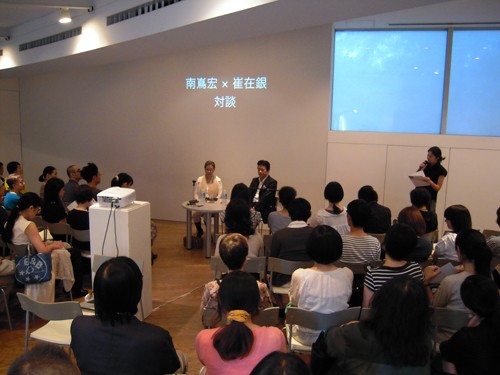
Professor Minamishima, who has known Choi for more than 20 years since “To the Depth” (1987) exhibition at the Spiral Garden where he featured the artist, started the dialogue with introducing Choi’s work and referred to her concept of universe which forms a basis of her recent work.
Jae-Eun Choi, who came to Japan to master ikebana in 1976, was attracted to an installation by Isamu Noguchi held at the Sogetsu Hall, which was a center for avant-garde art, and decided to study at Sogetsu. She gradually became fascinated in the temporality of the plants and began to seek for a new style of expression which went beyond the fundamental act of “cutting” in ikebana.
Below are some of her works which were introduced in the dialogue.
*The text was partly cited from the artist’s anthology “JAE-EUN CHOI WORKS.”
“EARTH” (1985) Sogetsu Plaza
Covering Isamu Noguchi’s famed work “Heaven” at Sogetsu Plaza with 13 tons of black soil and then sprinkling seeds of Orchard grass and let it sprout, Choi attempted to show the process of growth and how the green serves to change the space.
“It was in cold January…the contrast between snow outside, and the earth inside and
the color of green was beautiful.” (Choi)
“Thanks to ikebana, I am able to recognize the fact that time always flows, and that
everything (all the matters) is just one occurrence within the cycle of life.” (Choi)
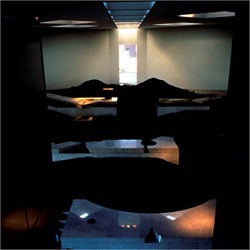
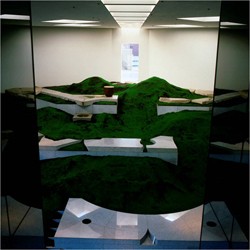
“PAST-FUTURE” (1988) National Museum of Contemporary Art, Korea
Museum’s permanent installation. A zelkova tree was transplanted to the museum ground and was encircled by steel plates. As the branches grew toward the light, the work took shape according to its own inner nature. The theme of this work is Past and Future.
“The tree has changed its form with time, and it is still growing.” (Choi)
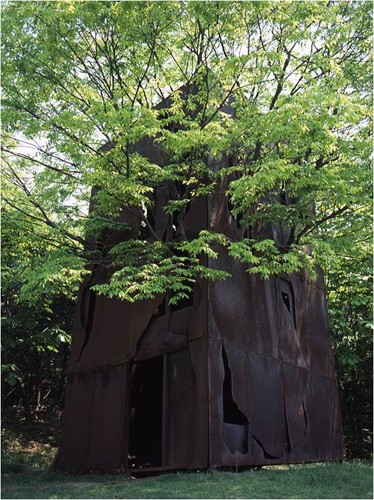
“WORLD UNDERGROUND PROJECT” (1986-)
This ongoing project began in 1986. Burying specially made papers (50×50 cm) in the ground in twelve countries, then unearthing three years later (some buried for fifteen years), this series lets the nature, such as activities of microorganisms in the ground, complete the work. Some works are still buried in the ground.
*Hara Museum owns one of this series entitled “Homage to Mozart” (1988), which is currently on view at Hara Museum ARC (annex in Gunma) in the exhibition, “Cheer up! Art can make you happy—Selections from the Hara Museum Collection. ”
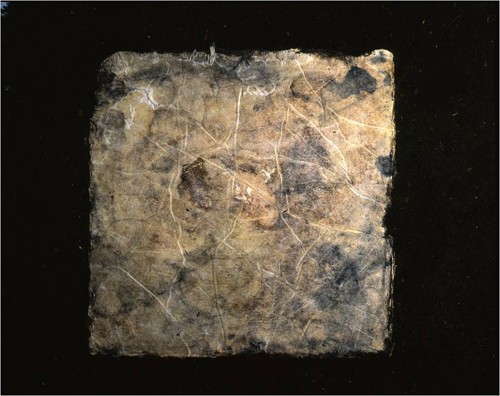
“CHAOS” (1994) The Sogetsu Art Museum
Photographs of magnified views of microorganisms on the surface of paper.
“Through exchanges with biologists and scientists, I began to be aware of the invisible world ruled by microorganisms. I would like to see the other side of matters which is different from the (human) world of reason.” (Choi)
“MICRO-MACRO” (1995) The 46th Venice Biennale Japan Pavilion
Surrounding the 1995 Venice Biennale Japan Pavilion in brightly colored plastic pipes, while showing a succession of still and moving images of microorganisms inside, this installation explores the tense interplay between the living mythos of inner space and the brash violence-ridden external world of contemporary society.
“This work contrasts the invisible world with the visible world.” (Choi)
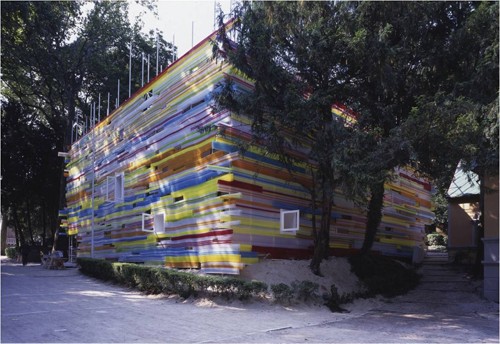
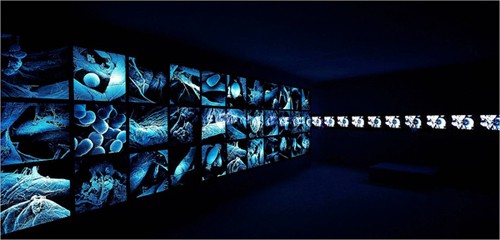
“on the way” (2001) docudrama
A film on the theme of “borders” created by mankind (such as Auschwitz and Korean Peninsula which is divided into northern and southern parts), bringing out several incidents that took place in the twentieth century.
“Lucy and Her Time” (2007) Rodin Gallery, Seoul
In 2007, Choi unearthed one of the works from the “World Underground Project” series that was buried in Africa and discovered that the paper was decomposed and lost its shape. She then decided to bring back a bulk of earth from the place where the work was buried and exhibited. As that place was close to the spot where Lucy (3.5 million year old skeleton of a hominid) was discovered, she decided to have an exhibition on the theme of Lucy, pondering upon the element of time.
“Lucy’s time is also my time.” (Choi)
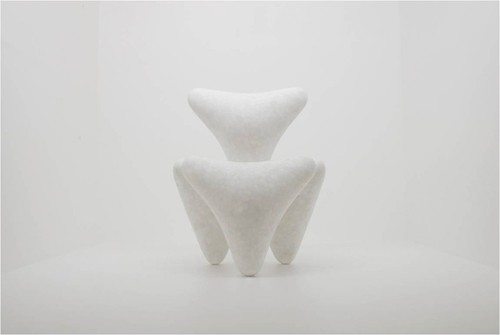
The event closed with Choi reciting a poem by Jorge Luis Borges in Korean. Choi, who is scheduled to live in Berlin, expressed her desire to be able to “express” her artistic creativity while facing up to her own identity. Professor Minamishima left an impressive remark, referring to Choi as “an artist who has a fear (awe/respect) towards the act of expression… one of the most important existences in the world of contemporary art.”
Next related event
October 31 (Sun.) 2:30-3:30 pm
Lecture by Keiko Nakamura (Director General, JT Bio-history Research Hall)(Japanese only)
–Lecture by Keiko Nakamura who has been an acquaintance of the artist Jae-Eun Choi, will talk about Choi’s work from the perspective of bio-history.
Event is free of charge (museum admission is required).
To make a reservation, please call or e-mail us at: Tel: 03-3445-0669
E-mail: info@haramuseum.or.jp
———————————————————-
Jae-Eun Choi—Forests of Asoka
Dates: September 11 (Sat.)-December 26 (Sun.), 2010
BloomBUS! free shuttle bus service is being provided between Shinagawa Station (Takanawa exit) and the Hara Museum every Sunday (Sponsored by: Bloomberg L.P./ Artist: Yasuhiro Suzuki).
